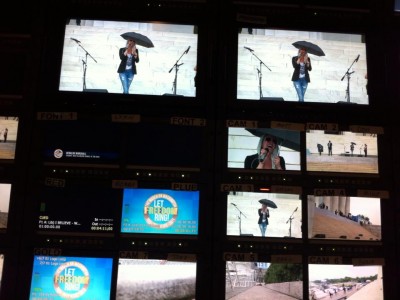Video Guide
Basic Outline – Full Page Coming Soon:
- Types of Video Options available
- LED Walls
- LED (light emitting diode) walls are very modular and can be built to almost any dimension you may need.
- LED Walls have some specific attributes and terms:
- nits
- dot pitch
- brightness
- resolution
- LED Walls have some specific attributes and terms:
- LED Walls are normally meant for outdoor usage due to their ability to be seen in direct sunlight.
- LED (light emitting diode) walls are very modular and can be built to almost any dimension you may need.
- Projection Screens
- Projection screens and projectors have come a long way in terms of being able to be used outdoors, and in very small areas.
- Projectors have some specific attributes and terms:
- lumens
- Projectors have some specific attributes and terms:
- You would normally prefer to use a projection screen when the budget can’t call for an LED wall, and/or it’s not too bright for the content to be washed out.
- Projection screens and projectors have come a long way in terms of being able to be used outdoors, and in very small areas.
- LED Walls
- Types of Video Production
- iMAG – stands for image magnification – this is the standard for live video broadcasting
- Various terms for video production
- switcher
- dolly
- jib
- Various ways to produce a video signal – SDI, HDMI, etc
- Types of Video / Streaming
- What sort of bandwidth needs, video setup, and requirements from the performer are needed to make a successful live video stream?
- Refer to future article about streaming options and best practices
- Other Elements to Consider:
- Proper size given the event and expected attendance – what’s a good dimension (and resolution) for 5,000 people vs 20,000 people
- Power needs – how to best tie in, how much power do a few examples of LED walls draw
- How to deal with syncing audio / video so there isn’t any delay
- Tying in with the video team – what do they need to properly advance the show?
